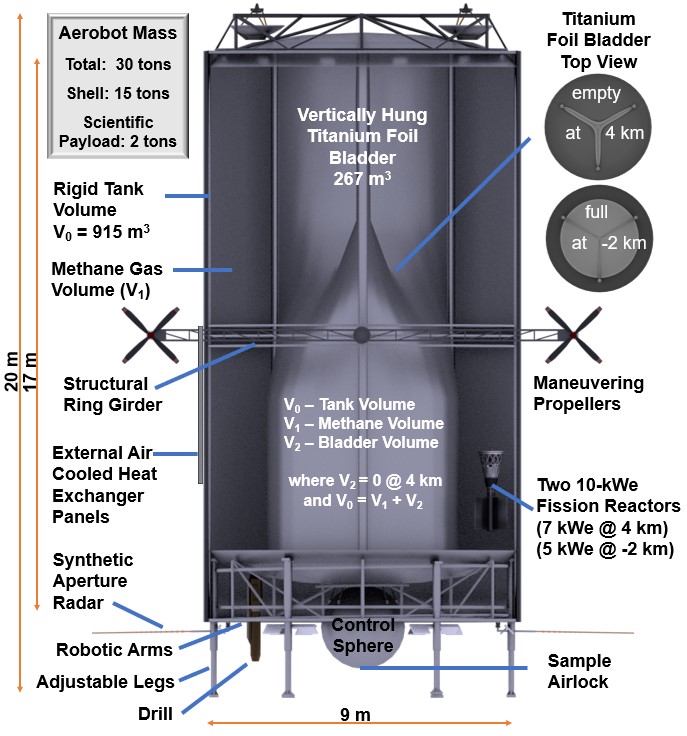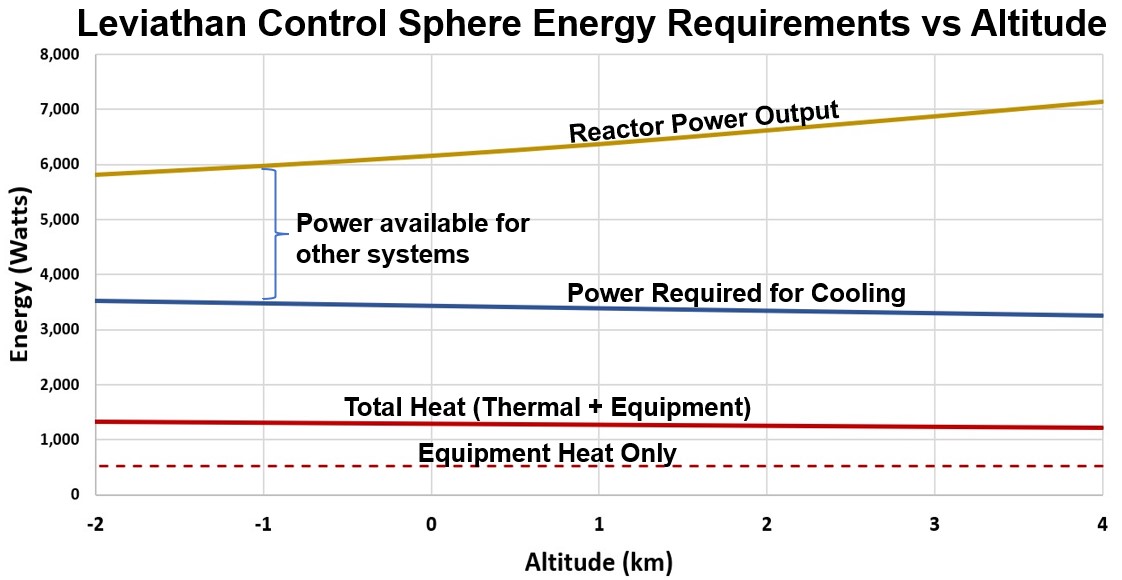Leviathan: A Starship-based Venus Aerobot for Low-altitude and Surface Explorations
The Leviathan Venus Explorer is a long-lived 30-ton nuclear-powered stainless-steel methane-filled balloon with operational altitudes from -2 km to 4 km capable of landing and taking off almost anywhere while circumnavigating Venus during its one-year mission
Leviathan Mission Animation ( be sure to maximize the quality setting )
Introduction
Over the years numerous missions have been proposed to explore the lower altitudes and surface of Venus; however, due to the unforgiving environment, mission designs have been exceedingly limited in mass, duration, and power thus severely restricting scientific return. The Leviathan is a next-generation lander and near-surface explorer that can revolutionize our approach to exploring Venus. The Leviathan’s Flagship-level mission, possible during the next decadal survey, is to explore Venus’ interior, surface and near-surface environments in unprecedented details.
The Leviathan Venus Explorer is a long-lived 30-ton nuclear-powered stainless-steel methane-filled aerobot with operational altitudes from -2 km to 4 km capable of landing and taking off almost anywhere while circumnavigating Venus during its one-year mission.
Long-lived complex surface operations require active cooling for critical systems and instruments. Active cooling requires a generous power supply. A generous power supply that works on the surface of Venus requires a nuclear fission power system. A nuclear fission power system requires a large lander. With such an investment, it would be desirable to relocate to as many landing sites across Venus as possible. The Leviathan Venus Explorer meets all of these requirements.
Background
Venus surface temperatures up to 485 C and pressures up to 109 bars can be expected at the lowest altitudes. Altitudes range from -2.9 km at the rift valley Diana Chasma to the 10.8 km summit of Maxwell Montes as measured from the average surface elevation. Atmospheric haze, clouds, and sulfuric acid mists start above 30 km. Due to its slow rotation, the diurnal cycle of Venus is 117 Earth days.
For past missions, surface probes and landers have had a limited lifespan of less than two hours due to a lack of active cooling of the electronics.
Extended surface operations using standard electronics has been considered all but impossible.
Mission Summary
The Leviathan aerobot’s mission is to explore Venus’ interior, surface and near-surface environment in unprecedented detail encompassing mineralogy, morphology, meteorology, seismology, and geological processes with a full suite of instruments. The Leviathan aerobot provides the time, mobility, and capability to investigate numerous sites across the planet.
For a rigid superpressure balloon mission the larger the tank size the greater the payload capacity and the potential for more scientific return. In this mission a section of Starship itself is used as the tank. This mission would be delivered by a customized SpaceX Starship on a one-way journey.
This mission is designed to take maximum advantage of standard Starship components allowing development costs to focus on Aerobot control systems and instrument packages.
An internal bladder is used to provide variable altitude control similar to what is used by Alphabet’s (GoogleX’s) Project Loon. As the bladder is inflated with denser CO2 air, the methane is compressed and the lifting force is reduced thus causing the aerobot to reduce its altitude. This system allows the aerobot to control its altitude and land and take off again at will.
Power is provided by two self-regulating 2-ton 10-kWe Fission Surface Power (FSP) reactors located in the methane volume providing power for heat pumps, batteries, and electronics.
Liquid methane is transported in an external cryogenic drop tank. About 18,000 kg of methane is required for the mission.
Please use the link at the top of the page
to view the white paper of the proposal
Leviathan Venus Explorer
- Total mass: 30 t (metric tons)
shell: 15 t
systems and payload: 15 t - Lift volume: 915 m3
- Lift gas: Methane (18,000 kg)
- Power: Two 10-kWe FSP reactors
- Design altitude: 4 km
- Operational altitudes: -2 to 4 km
- Differential pressure: 1 bar above ambient
- Design temperature: 500 C
- Control Sphere
redundant active cooling systems
operational temperature: 75 C
sample chamber with airlock - Primary transport: wind up to 5 mps ( 11 mph )
- Secondary transport: maneuvering propellers
- Altitude control: inflatable bladder (267 m3)
Control Sphere Energy Management
The control sphere contains all of the critical electronics, components, and batteries that require active cooling. Internal temperature is maintained less than 75 C. Equipment heat is assumed to be 520 Watts.
For this study a 1.75 m diameter titanium shell control sphere uses vacuum, multi-layered insulation blankets lining the insides, and thermal isolation of the equipment decks mitigate heating. Continuous removal of 1,200 Watts of heat is assumed from all sources. Heat is removed by a bank of coolers on the control sphere.



